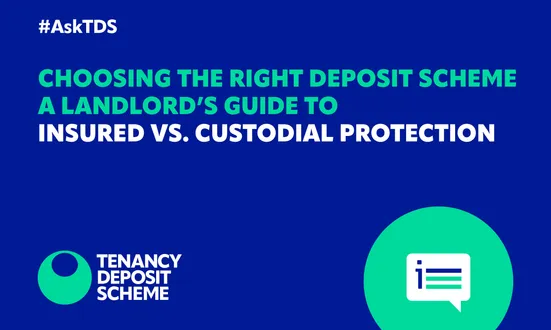As a landlord or letting agent in the UK, understanding your obligations regarding tenants’ deposits is crucial. One key responsibility is making sure that any deposit you receive is protected in a government-backed deposit protection scheme. These schemes safeguard your tenant’s money throughout the tenancy, and help prevent disputes when it’s time for the deposit to be returned. But how exactly do they work and why are they so important for landlords and agents? This article will explain everything you need to know.
Why do you need a deposit protection scheme?
Since April 2007, it has been a legal requirement for landlords and letting agents to register tenants’ deposits with a recognised deposit protection scheme. This legislation was introduced to protect tenants and ensure that landlords handle deposits fairly and transparently. Failure to comply can result in hefty penalties, including being ordered to pay up to three times the deposit amount back to the tenant.
By using a deposit protection scheme, landlords and agents can demonstrate transparency and trustworthiness. Not only does this build a positive reputation in the private rented sector (PRS), but it also helps to avoid costly deposit disputes at the end of the tenancy. One of the leading options for landlords is the Tenancy Deposit Scheme, which provides both insured and custodial protection solutions.
There are three government-approved schemes in England and Wales:
- Tenancy Deposit Scheme
- MyDeposits
- Deposit Protection Service (DPS).
They all operate under the same basic principles, but offer different types of protection:
1. Custodial Scheme: Under a custodial scheme, the deposit is held by the scheme itself throughout the duration of the tenancy. At the end of the tenancy, the scheme will return the deposit to the tenant or to the landlord, depending on the circumstances.
2. Insured Scheme: With an insured scheme, the landlord or agent holds the deposit, but they must pay a fee to have the deposit insured. If there’s a dispute, the insurance protects the tenant’s money, ensuring that the landlord cannot unfairly retain it.
All schemes offer free alternative dispute resolution services (ADR), which help resolve any disputes that might arise over deductions without the need for court involvement. More information on choosing the right scheme can be found on the official government website.
The process of protecting a deposit
Once you’ve received the tenant’s deposit, you must register it with your chosen scheme within 30 days. This involves providing both the tenant and the scheme with key information, such as the amount of the deposit, the date it was received, and details of the tenancy. Tenants must also receive a ‘Prescribed Information’ document, outlining how their deposit is being protected and what to do if there’s a dispute.
Why tenants care about deposit protection
From a tenant’s perspective, the deposit represents a significant financial commitment, and they need reassurance that it will be protected. Tenants expect agents and landlords to handle and protect their deposit fairly and legally.
At the end of the tenancy, if there’s a disagreement about deductions, tenants can feel confident knowing that an impartial ADR process will step in to resolve the issue.
A deposit protection scheme isn’t just a legal requirement—it’s a valuable tool for ensuring trust between landlords, letting agents, and tenants. Protecting a tenant’s deposit ensures peace of mind for everyone involved and helps maintain a fair, transparent, and professional tenancy.
About TDS
The Tenancy Deposit Scheme is part of The Dispute Service (TDS), the largest tenancy deposit protection (by value) and resolution service provider in the UK making life easier for tens of thousands of agents, landlords, developers, and millions of tenants and homebuyers.
Our award-winning customer service is highly rated on both Trustpilot and Google, and we’re backed by the NRLA. We offer free deposit protection in our Custodial scheme, and the lowest rates for landlords in our Insured scheme.
Other news stories


